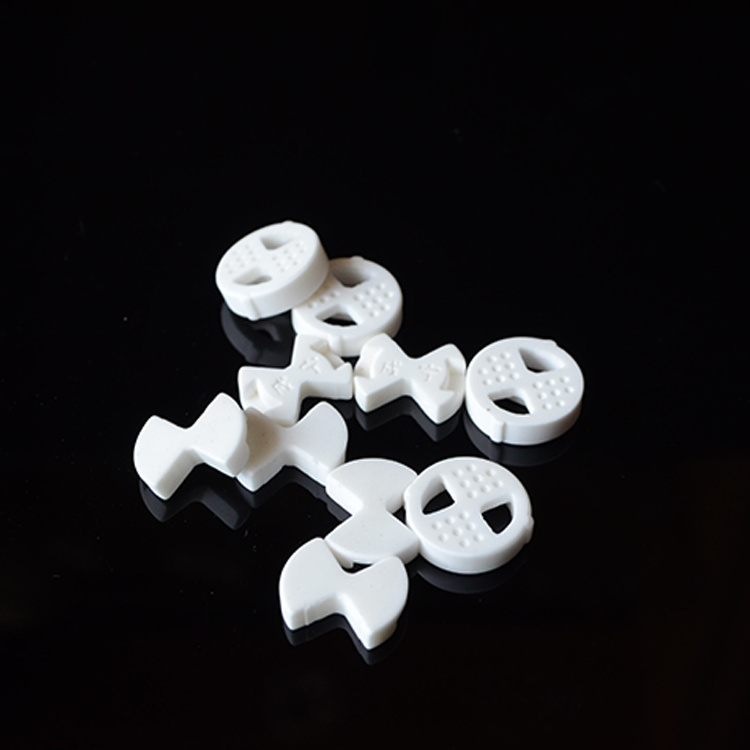
Unlocking the Benefits of Using Ceramic Fire Clay Fire Assay Crucibles
Time:
2025-08-09 20:40
Source:
Unlocking the Benefits of Using Ceramic Fire Clay Fire Assay Crucibles
Table of Contents
- 1. Introduction to Ceramic Fire Clay Fire Assay Crucibles
- 2. What Are Fire Assay Crucibles?
- 3. The Importance of Fire Assay in Metal Analysis
- 4. Benefits of Using Ceramic Fire Clay Crucibles
- 4.1 Durability and Thermal Resistance
- 4.2 Chemical Stability
- 4.3 Cost-Effectiveness
- 4.4 Safety and Environmental Advantages
- 5. Applications of Ceramic Fire Clay Crucibles
- 6. How to Choose the Right Crucible for Your Needs
- 7. Care and Maintenance of Ceramic Fire Clay Crucibles
- 8. Conclusion
- 9. FAQs
1. Introduction to Ceramic Fire Clay Fire Assay Crucibles
In the realm of metallurgy and precious metal analysis, **ceramic fire clay fire assay crucibles** play a pivotal role. These specialized containers are essential for conducting fire assay processes, a method renowned for its accuracy in measuring metal content in various materials. Unlike other materials, ceramic fire clay offers unique properties that enhance the efficiency and reliability of the assay process. This article delves into the manifold benefits of using ceramic fire clay fire assay crucibles, exploring their applications and maintenance to support optimal performance.
2. What Are Fire Assay Crucibles?
Fire assay crucibles are small, heat-resistant vessels used primarily in the analytical process of determining the quantity of precious metals present in ores, concentrates, and recycled materials. The crucibles are subjected to high temperatures, typically ranging from 1000°C to 1200°C, allowing the sample to melt and separate metal components. **Ceramic fire clay crucibles** are particularly valued for their ability to withstand these extreme conditions while maintaining structural integrity.
3. The Importance of Fire Assay in Metal Analysis
Fire assay remains one of the most reliable methods for determining the gold and silver content in various materials, thanks to its high precision and minimal contamination risk. This technique is especially important in industries such as mining, metallurgy, and recycling, where accurate metal analysis is crucial for financial and operational decisions. Using the right crucible can significantly impact assay results, making the choice of crucible a vital consideration for professionals in these fields.
4. Benefits of Using Ceramic Fire Clay Crucibles
Understanding the advantages of ceramic fire clay crucibles can help you make informed decisions about your fire assay processes. Here are some of the key benefits:
4.1 Durability and Thermal Resistance
Ceramic fire clay crucibles are designed to endure extreme temperatures without cracking or deforming. Their thermal resistance ensures consistent performance, allowing for accurate and reliable results during the fire assay. Unlike metal crucibles, ceramic crucibles do not oxidize or alter the chemical makeup of the samples, preserving the integrity of the assay.
4.2 Chemical Stability
One of the defining features of ceramic fire clay is its chemical stability. These crucibles do not react with the materials being tested, which minimizes the risk of contamination. This attribute is crucial in fire assay, where even minute impurities can lead to significant discrepancies in the final analysis.
4.3 Cost-Effectiveness
While the initial investment in ceramic fire clay crucibles may be higher than other materials, their longevity and ability to withstand multiple uses provide excellent cost-effectiveness over time. The durability of ceramic crucibles reduces the need for frequent replacements, ultimately saving money for laboratories and businesses.
4.4 Safety and Environmental Advantages
Ceramic fire clay crucibles are not only durable but also environmentally friendly. They are typically made from natural materials and do not release harmful substances during the fire assay process. This makes them a safer option for laboratory environments and contributes to sustainable practices in the industry.
5. Applications of Ceramic Fire Clay Crucibles
The versatility of ceramic fire clay crucibles extends across various applications. They are used in:
- **Metallurgical laboratories** for precise metal content analysis.
- **Jewelry manufacturing**, where accurate measurements of precious metals are essential.
- **Recycling industries** to assess metal content in recycled materials.
- **Geological and mining sectors** to evaluate ore quality and composition.
These applications highlight the significance of ceramic crucibles in achieving reliable results across different fields.
6. How to Choose the Right Crucible for Your Needs
Selecting the appropriate crucible involves several considerations:
1. **Material Composition:** Ensure the crucible is made from high-quality ceramic that can withstand high temperatures.
2. **Size and Volume:** Choose a crucible that meets your sample size requirements. Larger crucibles are necessary for bigger samples, while smaller ones are ideal for precise assays.
3. **Manufacturer Reputation:** Opt for crucibles from reputable manufacturers known for their quality and durability.
4. **Cost Considerations:** While considering the initial cost, factor in the long-term savings due to durability and reusability.
By taking these factors into account, you can ensure that you choose a crucible that meets your specific assay needs.
7. Care and Maintenance of Ceramic Fire Clay Crucibles
To maximize the lifespan of your ceramic fire clay crucibles, proper care and maintenance are essential:
- **Cleaning:** After each use, allow the crucible to cool gradually. Clean it thoroughly to remove any residual material to prevent contamination in future assays.
- **Storage:** Store crucibles in a safe, dry place to protect them from physical damage.
- **Avoiding Thermal Shock:** To prevent cracking, avoid exposing cooled crucibles directly to high temperatures or placing them in cold environments immediately after use.
Maintaining your crucibles will ensure their longevity and consistent performance.
8. Conclusion
Ceramic fire clay fire assay crucibles are indispensable tools in the pursuit of accurate metal analysis. Their durability, thermal resistance, chemical stability, and cost-effectiveness make them a preferred choice for professionals across various industries. By understanding their benefits and ensuring proper maintenance, users can unlock the full potential of these essential instruments, leading to successful outcomes in metal analysis processes.
9. FAQs
What are ceramic fire clay crucibles used for?
Ceramic fire clay crucibles are primarily used in fire assay processes to determine the metal content in ores, concentrates, and recycled materials.
How do ceramic crucibles compare to metal crucibles?
Ceramic crucibles offer superior thermal resistance and chemical stability compared to metal crucibles, making them less prone to contamination and deformation at high temperatures.
Can ceramic crucibles be reused?
Yes, ceramic fire clay crucibles can be reused multiple times if properly cleaned and maintained, making them a cost-effective option for laboratories.
What temperature can ceramic fire clay crucibles withstand?
Ceramic fire clay crucibles can withstand temperatures up to 1200°C, making them suitable for high-temperature assays.
How should I care for my ceramic fire clay crucibles?
Allow crucibles to cool gradually after use, clean them thoroughly to remove residues, and store them in a safe, dry environment to prevent damage.
ceramic fire clay fire assay crucible

